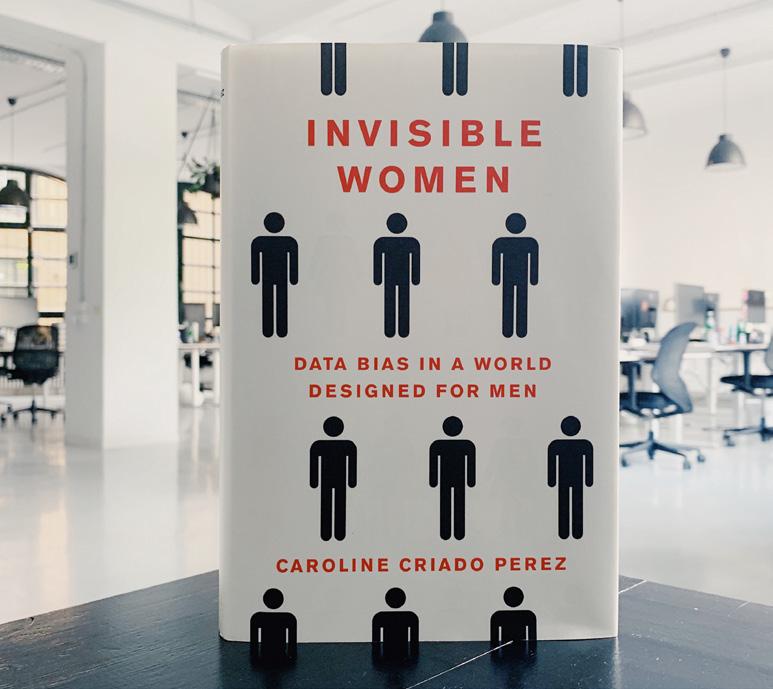
6 minute read
The Golden Ratio and Its Repetition Throughout Nature Max Harvey
Max Harvey YEAR 12
the GOLDEN RATIO and its repetition throughout nature
The Golden Ratio could be said to be as fundamentally important to our universe as any other constant such as Pi or Euler’s number, e. However a lot less is known about the value of the Golden Ratio and even less is known about why it exists and why it is mirrored across all fields of science and throughout our daily lives. The Golden Ratio’s appearances range throughout physics, chemistry, biology and even further into meteorology and architecture. So, first things first: what is the Golden Ratio and where does it come from? No doubt many of you are well acquainted with the Fibonacci sequence, which arises from the addition of previous terms in the sequence (1,1,2,3,5,8,13,21……..) and is used frequently to predict changing prices on the stock exchange by looking at long-term rises and falls which correspond to Fibonacci percentages such as 34% or 55% and then predicting future rises and falls. However, what may not be at first obvious is that the Golden Ratio arises from this seemingly basic sequence. Taking any two consecutive numbers and dividing the larger by the smaller will give a decimal answer between 1 and 2. A few examples are 5/3 which is approximately 1.67 and 13/8 which is approximately 1.63. Interestingly, as you use increasingly higher numbers in the Fibonacci sequence to obtain these decimals, the value that is obtained tends towards a value of 1.61803……. This here is the value of the Golden Ratio. It is often referred to as Phi and is an irrational number that, unlike Pi or e cannot be expressed approximately by a fraction. Putting it simply, the Golden Ratio is just a ratio between two things. It can also be found by splitting a length of wood into two pieces so that the length of the longer piece divided by the shorter piece is also equal to the total length divided by the longer piece, both of which are equal to Phi. Now that we understand what the Golden Ratio is and where it comes from, we can begin to look at where it appears around us, in both the past and the present. It is thought that possibly the earliest uses of the Golden Ratio was by the Ancient Greeks and Egyptians. Certain ratios in buildings such as the Great Pyramids of Giza and the Parthenon hint that both of these civilisations recognised the aesthetic value that the Golden Ratio held. The appearance of many objects is believed to be most appealing when the ratio of the sides is equal to Phi, the Golden Ratio. This is the reason why most rectangular picture frames have their sides in a ratio equal to that of the Golden Ratio as it is believed this provides the best base upon which to mount pictures. Indeed, many other Greeks and Egyptians noticed the importance of the ‘Golden Section’, as it was then known, including Plato, who believed that it was the key to understanding the physics of the universe. The Golden Ratio has been continually used in architecture and art since the time of the Greeks and Egyptians; it was particularly central to the work of Renaissance artists who used the ratios within their paintings. Outside of the world of art and architecture, the Golden Ratio also appears in many other areas. One of the most obvious is in nature, in particular plants. When looking at a plant, it is easy to see that the leaves or petals of its flowers are not arranged one on top of each other, but instead rotated by a certain degree. The amount of rotation can be expressed using a fraction, e.g. ¼ is a quarter turn. The value of these rotations is frequently numbers such as 5 /8 or 3 /5 which are two Fibonacci numbers divided by each other. The value of these Fibonacci fractions tends towards
Spiral Staircase (by Ludde Lorentz) Sunflower (by Laura Gilchrist)

0.61803… which is the reciprocal of the Golden Ratio (the reciprocal of the Golden Ratio is actually considered by many to be just another form of the Golden Ratio). In other plants, such as sunflowers, the Fibonacci numbers, and hence the Golden Ratio can also be seen. Looking at the placement of seeds within the centre of the flower, there are a certain number of clockwise spirals and anticlockwise spirals both of which are usually consecutive numbers in the Fibonacci sequence; hence, the ratio between these two numbers is equal to our magical Golden Ratio. A typical example would be 21 clockwise spirals and 34 anticlockwise ones. A biological example of the Golden Ratio can be seen in the structure of our own DNA whose dimensions of one spiral is 21 x 34 units meaning that the ratio between the length and width is once again equal to Phi! Although it is clear that there are many instances of the Golden Ratio all around us, the real question is: why are they there? Why is it that this ratio appears across so many disciplines and in so many differing scenarios? For some of the examples there is an easy answer, such as for the rotation of plant leaves and flower petals. A rotation of the leaves that is equal to the Golden Ratio provides the perfect arrangement so that the leaves receive maximum sunlight and the greatest amount of water is channelled towards the roots. This setup gives the plant the best possible chance of survival in its competition for nutrients and so is favoured over other arrangements. However, a number of plants do not use this arrangement and are able to survive perfectly well; therefore, it is clear that the golden ratio is not essential to survival, but is only one of many methods that can be used. Another easily explainable phenomenon is the arrangement of the seeds within the heads of the sunflower. Here it can be seen that the Golden Ratio of clockwise/anticlockwise spirals arises naturally when you try to place the seeds as close together as is possible. In both these examples it is clear to see that the golden ratio is favoured by nature and it appears too often to simply be a coincidence. As for an explanation of the appearance of the Golden Ratio within architecture and art, this poses a little more of a problem. The reason why the Golden Ratio is used in these fields is not due to natural selection but the fact that it appeals more to us humans. This suggests that humans have a predisposition to find objects possessing the Golden Ratio more aesthetically satisfying. The answer as to why this is the case is yet to be found but some even believe that the beauty of the human face is based on the Golden Ratio; hence, a ‘perfectly beautiful face’ can be predicted by using a Golden Ratio between different facial features. Perhaps the Golden Ratio is given more credit than it deserves. Maybe we are quick to locate places where it arises, hailing it as an all-important fundamental constant of the universe whilst ignoring the places where it doesn’t appear, saying that it is due to some other ‘circumstance’ or ‘factor’ that impedes its existence. However, with the few examples given above it is hard to believe that this constant, Phi, holds no significance at all; it just appears in too many places. All around us the Golden Ratio appears, for example within the shape of galaxies, hurricane formation and the length of your fingers. So, keep an eye out for other places that this mysterious value occurs because you never know where it might crop up; as seen above, it is mirrored in many areas throughout the universe. It may even be true that the dimensions of this page fit the pattern.










